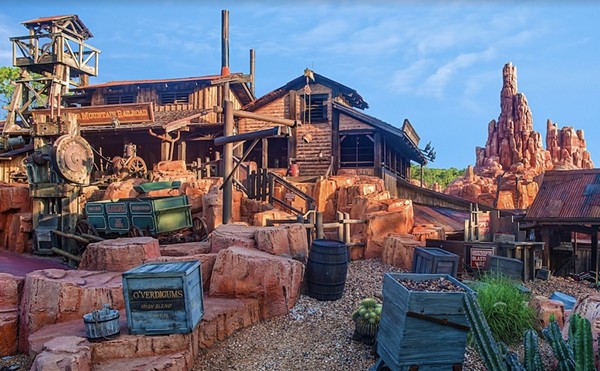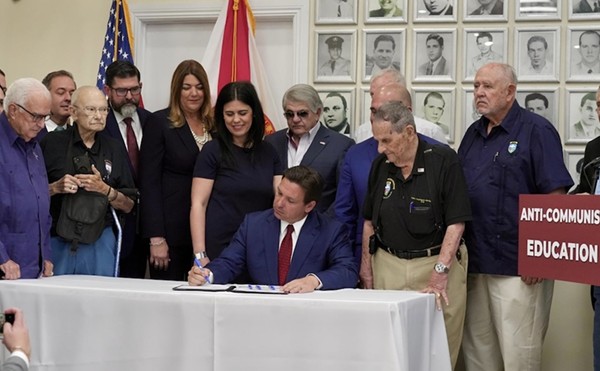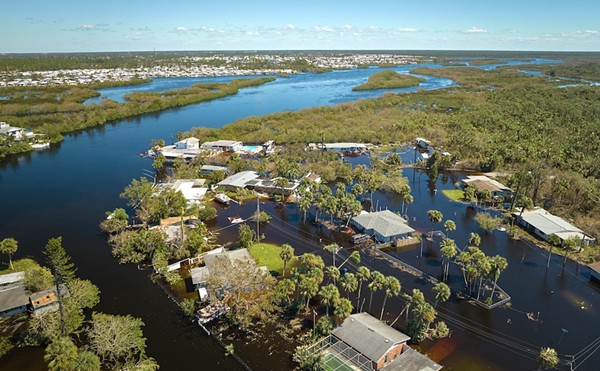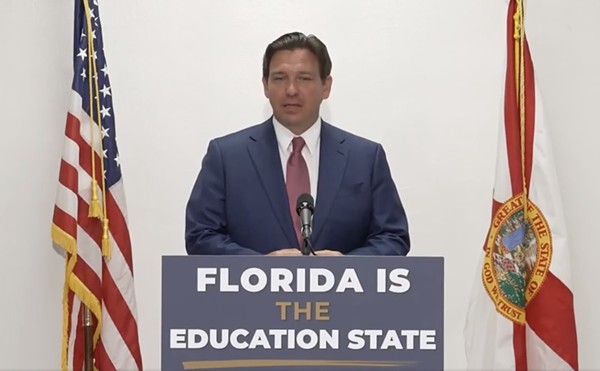Before Jacque Fresco became a revolutionary, he was an inventor. It was in the summer of 1948 when Fresco, then 32 years old, came closest to traditional career success. His “Trend Home,” built almost completely out of aluminum and glass, had earned a prominent display at Stage 8 of the Warner Bros. Sunset Lot in Hollywood. The home was a marvel of economic efficiency: It took only 10 men eight hours to construct the Trend Home, and it could be built for about half the price of that era’s average wood-and-brick houses. Like nearly every other product Fresco had ever invented, the Trend Home was designed for rapid mass production – something Fresco figured would be particularly important in the post-World War II world. The end of the war meant low demand for warplanes, and Fresco figured that the production of Trend Homes could save metal-working factories from shedding workers or shutting down completely. The homes would also solve the problem of housing for the tens of thousands of soldiers who had returned home from the battlefields and were starting new families.
The cost to tour the Trend Home during the three months it was on display was one dollar. Proceeds went to the Cancer Prevention Society; Fresco’s invention already had a $500,000 investment from a car salesman named Earl “Madman” Muntz. (His nickname came from one of his brilliant marketing schemes: In the early 1940s, when TV advertising was in its infancy, Muntz would promise to smash a car to bits with a sledgehammer, on camera, if he could not sell it by day’s end.) Muntz’s success in the commercial arena made him a powerful ally, but he regarded his investment only as seed money – for the Trend Home to reach its intended consumers, it would need federal funding. When an official from the Federal Housing Administration arrived at Muntz’s makeshift office at Warner Bros. Studios during the summer of 1948, it appeared to be the beginning of a prosperous era for inventor Fresco. But instead, it was the end. After the official left in a huff, Muntz told Fresco through an associate that the feds’ proposal – which would have added significant bureaucratic overhead to the production cost – nullified the home’s low-cost appeal. But without federal money or an additional private investment, the project could not exist beyond a handful of prototypes. After Fresco spent a year and a half perfecting the design and seeing the Trend Home through to completion, it was shot down in one day by a financial impasse. “That was my first awakening,” Fresco says.
It was but one of many professional setbacks that eventually led Fresco to a sobering conclusion: In the free-market system, his inventions would be considered valuable not only for their potential to help others, but their potential to generate profits. Even worse, he found that his knack for automating mundane tasks – for instance, he built a machine in the mid-’40s that could automatically sort dried beans by color – would most likely result in displacing workers, and unemployment was far worse than the boredom of the repetitive, mindless tasks from which he sought to relieve them. Fresco figured that the only way he could continue being an inventor was if he could change the society in which those inventions were evaluated, and he began seriously entertaining latent revolutionary thoughts. Fresco launched Project Americana just before he moved to Miami in 1955, rebranded his vision as Sociocyberneering Inc. in 1971; in 1976, he met the woman who would become his romantic and professional partner, architect Roxanne Meadows. In 1980 the two moved to Venus, a rural town about two hours south of Orlando. (Eventually, the town would become the namesake of their effort to create an economically equitable world.) There, Fresco finally saw his architectural designs not only built, but utilized. He and Meadows constructed four concrete domes, one of which they made their home, on a campus there. It offers a superficial taste of Fresco’s cities of the future, which would operate according to a “resource-based economy,” in which the monetary system – and hence, the profit motive and all of its inherent social ills – is abolished.
To this day, Fresco and Meadows are still living in their dome in Venus, aspiring to realize that vision. Though “The Venus Project” sounds naively Utopian, Fresco insists it isn’t – he calls it an “alternative direction” for a better society. Needless to say the couple is still quite far from moving society in that direction – money is part of the problem, as is an apparent unwillingness to collaborate with others – but it is worth noting that the Venus Project is arguably more popular now than at any other point in its 31-year history. Last summer, the couple returned from their first world tour, which spanned five months and 20 countries, ranging from Colombia to Slovenia. In addition, the Venus Project was recently featured in two prominent documentary films, one of which pointed thousands of young activists toward Fresco’s cause. Certainly, the onset of the Great Recession spurred many people to propose radical solutions to the world’s largest problems, but few of these people have also lived through the Great Depression, and perhaps none of them have illustrated their solutions as vividly as Fresco.
Though Jacque Fresco has been alive for nearly a century, he walks the 22-acre campus of his property in Venus daily. When doing so alongside a reporter on a July afternoon, he walks with his arms behind his back, his left hand clasped in his right, pausing to make eye contact when describing a particularly salient point – which is often. On Saturdays, he gives “Venus Tours,” which can last more than six hours. It is then that Fresco exhaustively describes his vision for the future, though most audience members are already quite familiar with the project, given that they were likely convinced to pay the $200-per-group fee by the vast amount of material available online. (The FAQ section on the Venus Project’s website is 105 questions and 26,618 words in length.) Fresco loves to talk – his teachings are populated with sweeping tales spanning from the islands of the South Pacific to the streets of New York City. For a history buff, these stories are a joy; for a reporter seeking direct answers, they can be frustrating. It’s for that reason that Academy Award-nominated filmmaker William Gazecki’s 2006 documentary on Fresco and the Venus Project, Future by Design, was the product of intensive editing. “I must have shot in that living room 20 times,” Gazecki says, adding that each session lasted between two to three hours.
With the exception of a heaping plate of store-bought cookies provided for guests, the couple’s living room appears straight out of The Jetsons – under a domed roof, a thin sofa traces a curved line in front of floor-to-ceiling sinusoidal windows bordered by scientific instruments. Near a spectrometer rests a hair dryer Fresco uses to demonstrate the “memory” of a coil of flexible space-age metal which, after being twisted and disfigured, can be heated to return to its original shape. The prevailing theme of Fresco and Meadows’ home is their work – renderings of and magazine articles about Fresco’s futuristic cities occupy the walls and shelves; the borders of their circular coffee table correspond with the borders of an illustrated circular city placed under the glass. Even in the bathroom, there are drafting boards and fine-tipped pens within arm’s reach of the toilet.
It is in his home that the majority of guests hear Fresco’s disjointed autobiography, the timeline of which tapers off around 1980, when he moved to Venus. In financial documents filed with the IRS, the mission of the Venus Project is described as: “The redesign of culture. Proposal of a social system in which automation and technology would be intelligently integrated into an overall social design where the primary function would be to maximize the quality of life rather than profits.”
Fresco chose the rural Venus as his headquarters for several reasons – he could not afford one of the Exuma Islands in the Caribbean, and in Venus, the local zoning authorities were already friendly to dome structures, which Fresco regards as superior to conventional designs. There was also seclusion: Today, downtown Venus is simply a church located next to a metal-working shop, and the densest population of humans is in a weed-eaten graveyard behind the church. There are two geodesic dome houses within walking distance of the graveyard, but according to Norman Gagnier, a construction worker who occupies one of them, this has nothing to do with Fresco, but rather, the practical utility of a dome. “Once you’re inside,” he says, “you can’t tell there’s a hurricane going on outside.” Gagnier has never actually seen the Venus Project’s “research and development center,” despite having lived only a three-minute drive away for the past three years. “They’re kind of stand-offish,” he says of Fresco and Meadows.
The 62-year-old Meadows is effectively the opposite of Fresco – concise, direct and serious. Her ideology is essentially a copy of her partner’s – she recalls being captivated by heady lectures at Fresco’s home in Coral Gables in the 1970s. (At that time, the price to hear Fresco speak was only $3.) “It was the most viable thing I’ve heard about why we behave the way we do,” Meadows says. “[There was an] understanding why there’s poverty and war – because things are kept scarce.”
Aside from Meadows and Fresco, there are two male volunteers who live on the premises – neither are paid, but neither pay rent. One is Joel Holt, a man in his 40s who came to Venus after his real estate career in Hawaii was devastated by the recession. “I went from one year being the owner of several properties to the next year being almost on food stamps,” he says. “I was in a ripe state of mind to accept that the system didn’t work well.” Today, Holt helps manage some of the project’s thousands of hours of video footage, much of which is of Fresco’s lectures. The other volunteer is a young groundskeeper who occupies the domed guest house located near a flat patch of grass which, in earlier years, was used as a helipad. Meadows won’t disclose who arrived at their property by air.
To the west are two workshops filled with Fresco’s 400-plus models, painstakingly shaped over the course of two decades from foam, fiberglass, plastic, wood and Plexiglas. Despite the fact that the models have long been rendered obsolete by computer animations of Fresco’s inventions (thanks in part to Doug Drexler, visual effects artist for the Star Trek movies), they are still a requisite part of the Venus Tour, serving as historical relics, as well as proof of Fresco’s scientific prowess and creativity. One workshop houses shelves of aircraft powered by ionic propulsion, dumbbell-shaped space stations and earth-movers that Fresco says could melt rock into obsidian with powerful lasers. In the other workshop – the one for which Gazecki’s film is named – are the majority of Fresco’s model buildings, including a cone-shaped hurricane shelter that he plans on marketing to state authorities.
Fresco’s numerous and outlandish models suggest that although the Venus Project’s campus of unconventional structures – four of them domes and three of them in the semi-cylindrical shape of a barrel vault – offers a glimpse into Fresco’s futuristic society, it is an infinitesimally small realization of his plans. The most common representation of Fresco’s grander scheme is the “transitional city” of his living room coffee table: between one and two miles in diameter, the city features at its core a massive dome that houses educational facilities and the provision of health care. Cultural facilities, like museums, theaters and libraries, compose the inner ring around the central dome, and parks and recreation areas are located in the verdant periphery; residential areas are found in between. Cars would not be needed in the city; a train would transport citizens almost exactly to their destinations – once at a halt, specific cars would separate from the main body of the “transveyor” and scale the sides of buildings. The city is a perfect circle, composed of a smaller “radial segment” replicated over and over again like identical slices of pizza. Easy replication and uniformity are obsessions of Fresco’s – it’s for that reason that New York City, pointedly devoid of such homogeneity, would be scrapped for its steel. “It’s chaos,” he says. “Every building is a different size.”
The heart of the Venus Project is its focus on the dissolution of the monetary system and subsequent societal transition to Fresco’s “resource-based economy.” This radical new system would be initiated by a sweeping survey of the earth’s resources, from the depths of the ocean to the bedrock of mountain ranges. After that, doling out the necessities of life would be a simple matter of mathematics, performed by an impartial “socially integrated computer.” (Think of an omnipotent, self-directed Internet, immune to hackers.) Private property would not exist – musical instruments, cameras and tennis rackets would be checked out like books from a library, which Fresco believes would mean “the end of most juvenile crime.” Many more jobs would be rendered unnecessary by automation, but in Fresco’s society, this would translate into more free time for meaningful work, or for the continued pursuit of education, which, obviously, would be free. Surely, the word “communism” comes to mind for many when first introduced to Fresco’s system. “Communism has armies, navies, prisons, police, banks, money – we don’t have any of those things,” Fresco replies. “We have nothing in common with any system.”
Roughly 7,000 technicians would be required to run the world in the risk-fraught transition to this new society, though Fresco fears that humanity may not recover from the resulting violence. “I may get shot,” Fresco says. “Somebody might project that I’m the anti-Christ.” Yet after the battle is won – ideas, not weapons, should prevail – the allocation of resources would be a fully automatic and equitable process accepted by the citizenry. By then, residents of Fresco’s cities would have been conditioned out of any lingering greediness and competitiveness left behind by the monetary system. “Kids have no bigotry or prejudice,” Fresco says. “Every move you make, every word you use, you were taught.”
Jacque Fresco was 13 years old when the Great Depression began. The precipitating event – the crash of the stock market in the final days of October 1929 – occurred less than 10 miles away from his home at the corner of 67th Street and 20th Avenue in Brooklyn’s Bensonhurst neighborhood. It was in his small flat that the young Fresco would convene his friends to discuss Darwin, aircraft design and, according to the late futurist Jack Catran, “the indignities of suffering through another impoverished northeastern winter.”
New York was hit especially hard by the Depression. Immediately following the stock market crash, there was a wave of suicides in the financial district; clerks of one hotel reportedly asked potential tenants whether they planned to use their rooms for sleeping or jumping. By March 1930 there were 50,000 meals being served in the Lower East Side’s 50 bread lines on a daily basis. By 1932, half of the city’s manufacturing plants had closed, and one out of every three New Yorkers was unemployed. Thousands were sleeping in empty lots. It was during that period when, while swinging on a bar at a playground, the young Fresco fell over and split his lip. “I held it together, and ran to the nearest doctor,” Fresco says. “The first thing he said is: ‘Your father working?’”
Fresco eventually paid the doctor by building several cabinets for him. Fresco’s father, an agriculturalist born in Constantinople (modern-day Istanbul, Turkey; Fresco’s father was born nearly 43 years before the collapse of the Ottoman Empire), was laid off almost immediately after the onset of the Depression. His mother Lena, who emigrated from Jerusalem, was a stay-at-home mom who took up freelance sewing to make money – besides Fresco, there was an older brother and a younger sister to be raised. Fresco rarely talks about his family. “My parents were ‘normal,’ meaning fucked-up by society,” he says. “They knew nothing. I looked at them as children, pissants.” He held that viewpoint of other adults as well: After all, they were the ones responsible for an economic structure that made no sense. “I looked around, and the stores had everything in the windows … whatever people would need,” he says. “But [people] had no money.” And he has a point. Whatever the causes of the Great Depression – it is still a matter of active debate among scholars – it certainly wasn’t for lack of physical resources.
Fresco left home at the age of 14, hitchhiking south and jumping trains as one of the so-called “wild boys of the road.” He returned to New York, only to leave for good at the age of 17 after pamphlets titled “Come to California, Lots of Jobs” were airdropped upon the city. Naturally, he detested the 7-cent-per-hour farm labor waiting for him there, but eventually, he was able to convince the Douglas Aircraft Co. to hire him after he presented some uncommonly advanced designs. His interest in more fundamental societal changes persisted, however, and in 1939, he traveled to the Tuamotus, a chain of coral atolls in the South Pacific Ocean, to observe how the natives lived. He had arrived there after asking the natives in Tahiti which islands were “clean” – that is, without money.
Just as the Great Depression had made the problem clear to him, so did the natives of Tuamotus make clear the solution. When they brought in nets full of fish, Fresco says, the catch was distributed to everyone, himself included. “They didn’t say: ‘You owe me five bucks,’” Fresco says. “They shared whatever they had.” During his first days there (he ultimately spent six months in the Tuamotus), Fresco found a few natives in his thatch hut, rummaging guiltlessly through his things – they had no concept of property – and were more mature about sexual matters than most American adults, even though they were in the nude constantly. “There were no Peeping Toms,” Fresco says. “There were no fetishes. There were no tit-men, leg-men, ass-men, hair-men – they stroked the whole female.”
This experience helped to shape what appears to be Fresco’s core ideological principle: that there is no such thing as “human nature,” and hence, a resource-based economy – the most logical and equitable system he can imagine – would not be imperiled by innate greed. In a country where the richest 1 percent of the population controls 40 percent of the country’s wealth, such a philosophy is met with both skepticism and admiration. According to Patrick Tucker, deputy editor of The Futurist, the conditions that bred Fresco – desperation and suffering wrought by economic turmoil – are likely now producing more radical thinkers like him. “Go out and talk to somebody that’s been sitting in line all night, waiting to talk to somebody about refinancing their home loan so they can stay in their house, and ask them how open they are to the idea of completely reinventing the way we do everything,” Tucker says. “I think you’re going to find a more enthusiastic response than you would at a time when everybody was living under the notion of all boats rising.”
What’s most incredible about Zeitgeist: The Movie is the pace at which it dismantles – or at least attempts to dismantle – America’s sacred cows. Within the span of 74 minutes, the Bible is dismissed as no more than an “astro-theological literary hybrid,” the terrorist attacks of Sept. 11, 2001, are concluded to have been orchestrated by the U.S. government, and the federal income tax is declared to be an unconstitutional creation of a private corporation known as the Federal Reserve. Within six months of its June 2007 release, Zeitgeist generated 50 million views on Google Video. It was during the film’s buzzing aftermath when the film’s creator, Peter Joseph, set out to make a sequel which explored solutions. He heard about the Venus Project, and less than a year later, Zeitgeist: Addendum, the second documentary to uncritically present Jacque Fresco’s vision for the future, was released. (Joseph could not be reached for this story.)
With that, the Venus Project was brought into the fold of what was not only a successful film franchise, but an activist movement. By March 2009, the “Zeitgeist Movement” was an official organization which claimed a quarter million members. This appeared to be exactly what Fresco’s vision truly needed: an army of willing supporters to not just talk about change, but fight for it. But it didn’t last – the partnership ended in April of this year in an apparent power struggle, after which Joseph wrote his supporters a note: “Without [The Zeitgeist Movement], [The Venus Project] doesn’t exist – it has nothing but ideas and has no viable method to bring it to light. It takes community to do that. For 30 years they did little to progress. I still ask … what the hell have they been doing for 30 years?!”
Meadows says that she and Fresco were partly occupied with their survival. Before the release of the documentaries, the Venus Project was not well-known, and hence, Fresco’s ideas translated into fewer dollars. Meadows designed multi-million dollar luxury homes for powerful real estate developers – how she would “prostitute” herself, she says – and Fresco consulted on aspiring inventors’ designs. In the meantime, she says, they were constructing the domes themselves; Fresco was also building models and writing books, such as 2002’s The Best That Money Can’t Buy: Beyond Politics, Poverty & War. It was around the onset of the recession and between the release of the two documentaries when the couple dedicated themselves completely to marketing the vision of the Venus Project. “We don’t take any vacations. We work around the clock,” Meadows says. “We work from when we get up, to when we can’t stay up anymore.”
Though Fresco, at 95, is nearing the end of his life – the world tour’s last four scheduled lectures were cancelled because he was suffering from breathing difficulties – this unremitting labor revolves completely around him. When Fresco is not giving his Venus Tours, Meadows and another volunteer make an effort to film him for at least one hour every other day; currently, they are raising funds for a “major motion picture” in which the protagonist would be modeled after Jacque Fresco. (“If we can get this movie out there, in 90 days people will realize what it will take to build the first model city,” Fresco told a reporter from Gulfshore Life magazine in 1990.) To the Project’s activists outside of Venus, Fresco is an ever-present focus as well. The design team’s primary purpose, for example, is to come up with detailed technical specifications for Fresco’s designs, not to draw new ones. And because it is of “prime importance” to understand the “direction” of the project, according to Meadows, the activists attending online “study groups” of Fresco’s material are asked to read his writings aloud.
The Venus Project’s top-heavy approach to organizing points to a larger weakness: Fresco, despite his somewhat socialistic ideology, is not very good at being social. This became evident to Nathanael Dinwiddie, a 21-year-old film student at the University of Kansas, during his meetings with Fresco and Meadows throughout the course of this year. Since February, Dinwiddie has dedicated hundreds of hours to unearthing primary sources that would validate the stories of Fresco’s early life – since the release of Addendum, stories from Fresco’s earlier years have been labeled as fabrications by a persistent blogger named “anticultist.” As a result, Fresco’s Wikipedia article, thanks to Dinwiddie, is lengthy, detailed and laden with footnotes. (Some of these primary sources, like the original brochure for the Trend Home, are included in the online version of this story.) Dinwiddie is working on a documentary on Fresco, and eventually, wants to see a bio- graphy written about him – certainly, the bulk of the book would concern Fresco’s activities before 1980. “After they purchased the Venus Project land, he really kind of closed off from the world,” Dinwiddie says. “He interacts with people there, at the Venus Project, and it’s only concerning the Venus Project.”
Indeed, this reporter cannot recall an instance in the nearly eight hours spent at the Venus Project in which he was asked a question by Fresco other than a variant of “Do you understand?” It’s this lack of professional engagement, William Gazecki says, that has hurt Fresco the most. “The real missing link in Jacque’s world is having put Jacque to work,” Gazecki says. “[It’s] exemplified when people say: ‘Well, show me some buildings he’s built. And I don’t mean the domes out in Venus. I mean, let’s see an office building, let’s see a manufacturing plant, let’s see a circular city.’ And that’s where he should have been 30 years ago. He should have been applying his work, in the real world … [but] he’s not a collaborator, and I think that’s why he’s never had great public achievements.”
At one point during the production of Future by Design, Gazecki implored Fresco to travel with him to General Electric’s Global Research Center in Niskayuna, N.Y., to observe some of the cutting-edge scientific experiments being conducted there. Gazecki says that Fresco refused, citing the possibility that scientists there would “steal” his ideas. (Fresco invented many medical devices, such as hip and knee prostheses, but says that he was swindled out of hundreds of patents by the doctor who commissioned the designs. “I’m a lousy businessman, I admit that,” Fresco says.) “He’s got that old-fashioned inventor mindset, where he wants to protect his greatest work from being absconded,” Gazecki says. “And I think that’s been a big limitation for him.”
This missing link was evident to one of his old friends, physics professor Paul Hewitt, when he came to visit Fresco in Venus in 1999. Hewitt, author of the wildly popular Conceptual Physics textbook (which is now in its eleventh edition), credits all of his teaching successes to Fresco. “I have never met a man who could teach as well as Jacque,” Hewitt says. It’s for that reason he was disappointed to find, upon arriving at the property of the Venus Project, that no students were there to absorb Fresco’s teachings as he had done nearly half a century earlier. “It was like making the best pie in the world, [but] no children come to get a piece of it,” Hewitt says.
Among the steep obstacles that his organization faces, one of them is convincing the 193 countries composing the United Nations, as well as the world’s most powerful corporations, to abolish themselves and give up all of their assets for the common good. “What I talked to him about over and over and over and over again, and never got a clear answer – and never have gotten a clear answer – is: How do we get there from here?” Gazecki says. “He doesn’t know.”
But Gazecki adds that this is not a fault of Fresco’s, but rather, that of himself and other admirers for expecting a satisfying answer to such an impossibly difficult question. “We can’t turn people like him into sort of a Jesus figure,” Gazecki says. “That’s not what he is. He’s a guy with a bunch of ideas that make sense. … This whole notion of looking to Jacque for more answers than he’s already provided – I think it’s bullshit. He’s done his job. It’s time for the people that appreciate what he does to take it to the next step themselves.”
Fresco seems to agree. “There are no final frontiers,” he says. “Even the city I designed will be a straitjacket to the kids of the future. They’ll design their own cities. If you make a statue of Fresco, you hold things back.”
A letter of commendation from U.S. Army Col. Paul Kemmer. The specific date is unknown, though the letter must have been issued sometime between 1942 and 1944, when Fresco served in the Army Air Corps—known today as the Air Force. During his time in the Air Corps, Fresco worked as an engineer in the design department of the aircraft laboratory at what is today known as the Wright-Patterson Air Force Base, near Dayton, Ohio.
1946.10.29 -- Fresco Wing Patent
Fresco's "variable camber wing" design, which was commissioned by the Army and was granted a patent on Oct. 29, 1946. According to the above patent record, the design depicts "a wing structure having a maximum strength with minimum weight."
[003] - 1948.06.XX -- Official Trend Home Brochure
The accompanying brochure for the display of Fresco's "Trend Home" at Warner Bros. Studios in Hollywood during the summer of 1948.
Products From Scientific Research Labs
A selection of Fresco's designs from Scientific Research Laboratories, a business he established in 1947 occupying a small office roughly a mile northeast of Hollywood. Fresco's Los Feliz research center was operational for less than a decade—in the mid-'50s, the state of California bulldozed the lab to make way for the Golden State Freeway. This was the precipitating event for his relocation to Miami, though Fresco would subsequently tell a reporter there that he moved to the East Coast to "escape the Los Angeles smog." The designs are as follows:
Page 1 – A hologram projector commissioned by producer Jack Moss, who then worked for Paramount Pictures.
Page 2 – A mechanism for viewing three-dimensional vectograph images.
Pages 3, 4, 5 – Medical devices designed to rotate the femur. These were, according to Fresco's partner Roxanne Meadows, only a few among hundreds of such designs commissioned by Dr. Irving Fixel of Hollywood, Fla., who allegedly reneged on his promise to share the ensuing patents with Fresco.
Pages 6, 7 – Fresco's model of an "enclosed sanitary system" in which one could watch television while lying in bed within a hermetically-sealed chamber.
Page 8 – An ultraviolet lamp.
Page 9 – A sketch of the Sonomix, designed to mix food with ultrasonic sound rather than blades.
Page 10 – A serving tray made completely out of aluminum, designed for an aircraft company.
Page 11 – A lamp that could "snap" together without the need for traditional assembly tools.
Pages 12, 13, 14 – The Volk Pipe, the innovations of which included an all-aluminum composition to lower the temperature of the smoke.
1960, 1963 -- Letters From Hubert Humphrey
Letters exchanged between then-U.S. Senator Hubert Humphrey (who would later be elected vice president of the United States along with President Lyndon B. Johnson) and Gerald Barron, a California attorney and one-time U.S. House candidate who thought highly of Fresco. This correspondence occurred around the time the city of Washington, D.C., was planning its mass transit system. When Fresco finally met Humphrey, he recommended that the train be built above ground to save both financial and material resources; the top of the above-ground tunnel, Fresco argued, could be used as a raised pedestrian walkway. (This did not happen.) In addition, Fresco says that the Johnson Administration's "Great Society"—a series of domestic policy initiatives which aimed to eliminate poverty and promote social welfare—was in fact a stripped-down version of "Project Americana," Fresco's ten-year plan for social change. (Note: Barron also attempted to set up a meeting between Fresco and evening television personality Steve Allen; that letter is included as well.)
Fresco's Sketches, Designs for 32 Part Car
Though Jacque Fresco was much more than an inventor by the 1960s, he was still actively marketing new designs. The above document contains sketches and renderings of the Ultra, an automobile comprised of only 32 parts. In 1969 Fresco built a prototype of the car, powered by a Villiers motorcycle engine placed behind the front wheel.



















